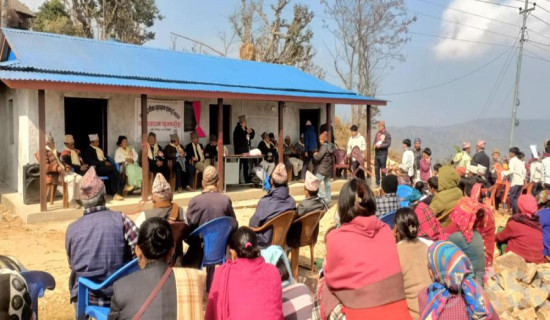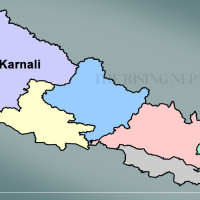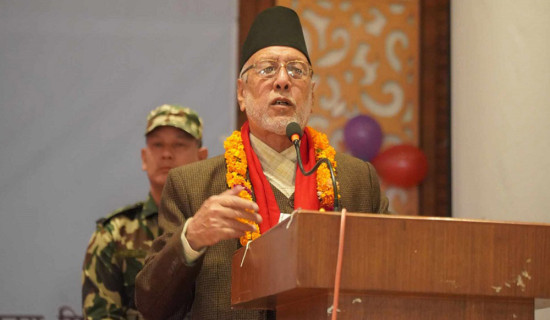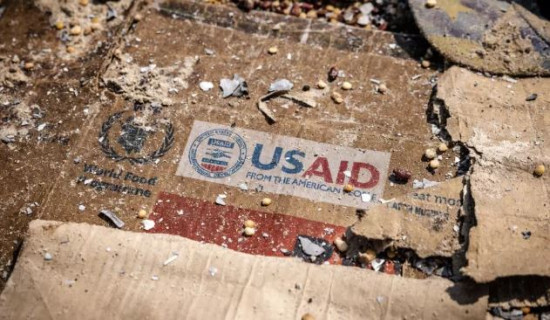- Tuesday, 25 February 2025
Thehe: Village of Nepal’s rich archaeological heritage
By Rajan Rawat,Humla, Feb. 25: Located in the remote hills of Simkot Rural Municipality-1 and 2, Thehe village stands as a living testament to Nepal’s architectural and cultural heritage. Here, time appears to have stood still, with families continuing to reside in houses built over a century ago by their forefathers.
Despite being built using traditional methods, the villagers still reside in these ancient structures.
According to Bam Bahadur Bhandari, a local of Simkot-2, the people of Thehe are compelled to live in the houses built by their forefathers.
He said that as the houses were constructed closely together, it was possible to walk from one roof to another.
He further mentioned that due to religious beliefs surrounding the local deity Rampal, villagers are prohibited from relocating their homes. Despite being old, these houses have withstood earthquakes so far.
He also stated that he and his three brothers are compelled to live in the interconnected houses.
Bhandari, who is also a chairman of the Humla Chamber of Commerce and Industry, said that while some families have relocated, most villagers still live in their ancestral homes.
Since they are not allowed to build new houses elsewhere, families are forced to divide the existing rooms among brothers. Due to the interconnected nature of the village, both people and livestock face difficulties moving in and out of their homes.
The village also struggles with water supply and drainage issues, making it challenging to install taps or drainage systems. During the monsoon, villagers have to travel through the muddy pathways, further complicated by the closely connected houses.
Each house does not have separate walls. Instead, the walls are jointly constructed by two families using stone and mud, while the roofs are made of wood, straw and mud.
Although built using traditional methods, these houses are considered earthquake-resistant due to the wooden reinforcements placed between the walls. Additionally, wooden pillars are installed from the ground floor to the third floor for structural support.
Due to its dense settlement, the village has been divided into two wards under Simkot Rural Municipality.
Ward Chairperson Devjung Bohara said that Thehe village holds historic and religious significance, which is why locals continue to live in this densely packed settlement.
He believes that preserving these houses would help maintain the village’s cultural identity, though he acknowledged that many of the old houses require renovation. “In recent years, several houses have been in a dilapidated condition. If any local wishes to repair or rebuild their house, they must seek approval from their neighbours before proceeding,” said Bohara. Given the age and condition of the houses, proper settlement management is essential for the village, he added. Traditionally, women during menstruation and postpartum periods stay in the cowshed on the ground floor of these old houses. Additionally, in winter, disputes often arise among villagers over clearing the snow-covered roofs.

















